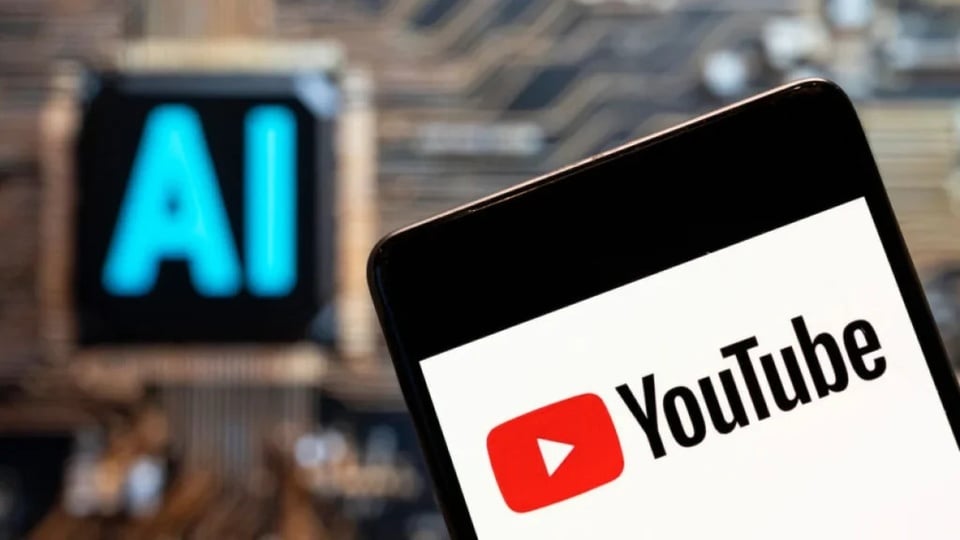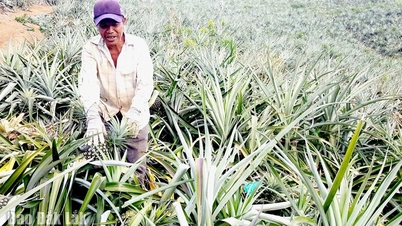 |
YouTube is focusing on developing AI to improve the user experience. Photo: Digiwatch . |
As the world's largest online video platform, one of the biggest limitations for YouTube viewers is the language barrier. Amidst the rapid development of AI-generated content, YouTube has just introduced an automatic voiceover feature, now supporting Vietnamese.
In MKBHD's impressive video about the Samsung Galaxy S25 Edge, when switched to Vietnamese, the Vietnamese voice sounds relatively easy to understand and clear. This experience is quite similar to the professional AI voice reading commonly used in text-to-speech software such as Google Text-to-Speech andFPT Play Voice.
When transitioning back and forth with the original English version, the dubbed version is quite accurate, preserving the nuances and expressions of the creator quite well. The voice has intonation, sometimes using exclamations like "yes, that's it," creating the feeling of almost having a direct conversation.
However, AI-generated translations are often mechanical, word-by-word, resulting in unnatural and inaccurate sentences. Viewers must listen attentively to interpret the creator's intended meaning.
Although the voiceover is entirely based on Vietnamese subtitles, the AI still mispronounces words like "super," "customer," and "trade-off," causing confusion for listeners. This can lead to monotony, inaccurate communication, or incomplete content from the original source.
Before uploading a video, creators will be able to listen to previews of voiceovers provided by AI. Videos with Vietnamese voiceover support will usually have a Vietnamese title, along with the phrase "voiceover" right below it.
Artificial intelligence is present in every stage, from idea generation and video performance analysis to subtitle creation and voice imitation. YouTube expects that within the next five years, all uploaded videos can be automatically dubbed into multiple languages while retaining the original voice and expressions of the creator.
As of the end of December 2024, this feature supported nine languages when translating from English. In early 2025, Neal Mohan, CEO of YouTube, officially confirmed that AI auto-dubbing would be rolled out to all partners. By April, the feature was quietly activated for all monetized channels.
A Reddit post expressing dissatisfaction with this feature received over 100 comments and 450 likes. One person argued that many voice-over software programs already do a pretty good job, and YouTube itself has subtitles, meeting users' language translation needs.
Another comment stated that the AI misheard "spacetime" as "spare time," leading to incorrect translations. Many other users also reported that the feature was ineffective and sought ways to disable it within the app.
YouTube itself acknowledges that AI auto-dubbing is still relatively new and welcomes user feedback. Before posting a video, the platform will notify creators of the AI's limitations in understanding meaning, pronunciation, and noise discrimination. They will need to verify the accuracy of the dubbing before releasing it to viewers.
However, according to Air.io , the feature is worth a try. It's a low-cost way to test whether audiences enjoy a creator's content and whether the channel can attract new viewers with these dubbed versions. While not perfect, the technology has the potential to expand the reach of content.
Currently, not all videos will have dubbed versions, and users cannot disable this feature by default. Instead, try changing your browser language to English to reduce the frequency of AI-dubbed versions.
Source: https://znews.vn/youtube-vua-dung-ai-de-pha-vo-rao-can-ngon-ngu-post1553547.html



![[Live] 2025 Community Action Awards Gala](/_next/image?url=https%3A%2F%2Fvphoto.vietnam.vn%2Fthumb%2F1200x675%2Fvietnam%2Fresource%2FIMAGE%2F2025%2F12%2F16%2F1765899631650_ndo_tr_z7334013144784-9f9fe10a6d63584c85aff40f2957c250-jpg.webp&w=3840&q=75)
![[Photo] Prime Minister Pham Minh Chinh receives the Governor of Tochigi Province (Japan)](/_next/image?url=https%3A%2F%2Fvphoto.vietnam.vn%2Fthumb%2F1200x675%2Fvietnam%2Fresource%2FIMAGE%2F2025%2F12%2F16%2F1765892133176_dsc-8082-6425-jpg.webp&w=3840&q=75)
![[Image] Leaked images ahead of the 2025 Community Action Awards gala.](/_next/image?url=https%3A%2F%2Fvphoto.vietnam.vn%2Fthumb%2F1200x675%2Fvietnam%2Fresource%2FIMAGE%2F2025%2F12%2F16%2F1765882828720_ndo_br_thiet-ke-chua-co-ten-45-png.webp&w=3840&q=75)

![[Photo] Prime Minister Pham Minh Chinh receives Lao Minister of Education and Sports Thongsalith Mangnormek](/_next/image?url=https%3A%2F%2Fvphoto.vietnam.vn%2Fthumb%2F1200x675%2Fvietnam%2Fresource%2FIMAGE%2F2025%2F12%2F16%2F1765876834721_dsc-7519-jpg.webp&w=3840&q=75)

































































![[Live] Closing Ceremony and Award Presentation for the "Impressive Vietnam Tourism" Video/Clip Creation Contest 2025](https://vphoto.vietnam.vn/thumb/402x226/vietnam/resource/IMAGE/2025/12/17/1765974650260_z7273498850699-00d2fd6b0972cb39494cfa2559bf85ac-1765959338756946072104-627-0-1338-1138-crop-1765959347256801551121.jpeg)


























Comment (0)